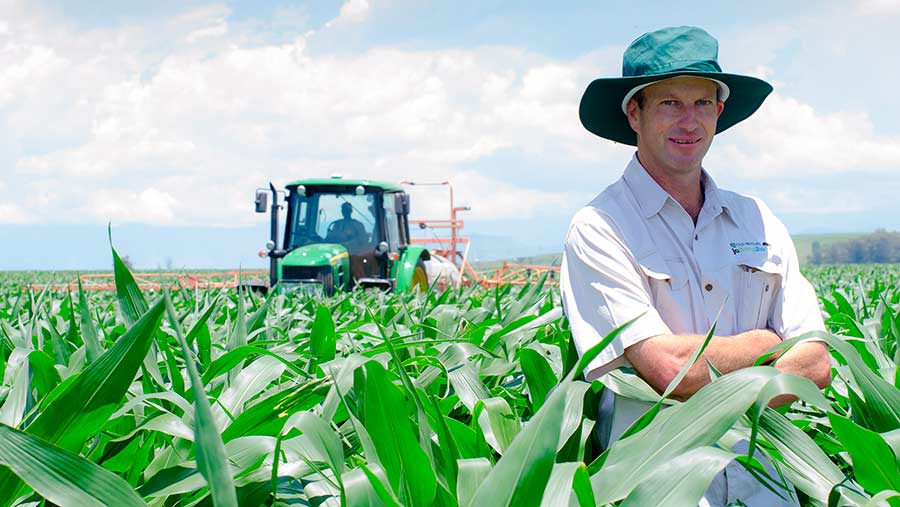Farmer Focus: Farmers shouldn’t need no-till incentives
 Bruce Shepherd © Karen Edwards
Bruce Shepherd © Karen Edwards We have recently received some nice autumn rain. Winters are always dry in South Africa so late season rain is always appreciated.
This moisture will certainly help kick-start the cover crops I have aerially seeded into my maize.
I sow the cover crops by aeroplane to try to get them established before the winter dry season.
See also: Which establishment system is best? 5 growers share their stories
I have noticed in the British media a fair amount of discussion over Michael Gove’s green Brexit speech. Allow me to add an African perspective to a first-world problem.
He talks about “effective incentives for long-term thinking”. Well, here in South Africa, I have zero incentives. One could say that I have anti-incentives or disincentives.
I have to pay for private security to help with crime, as the police are largely ineffective.
There is also of course the small issue of expropriation of my land without compensation, which is high on parliament’s agenda.
No-till shouldn’t need subsiding
Gove wants to “pay farmers to improve the quality and fertility of their soil”. That is a very strange concept for me that someone else must pay me to improve my soil.
I spend a lot of time, money and effort improving my soil. I improve the fertility with fertiliser, gypsum and lime but more importantly, I am desperate to get my soil carbon levels higher through no-till and cover-crops. My soil is alive.
This is hugely profitable for me in the short-term as I get better yields through more efficient usage of rainfall and healthier crops.
In the long-term I am protecting my soil from erosion in an attempt to safeguard my future in agriculture.
Gove goes on to say he would like to support those who practice min or no-till cultivation. He doesn’t spell it out but hints at some sort of subsidy for no-till.
That is absolutely absurd. No-till is so integral to my farming, you couldn’t pay me to stop no-tilling.
Bruce Shepherd farms in KwaZulu-Natal, South Africa. He plants 500ha of rain-fed summer crops across 3,000ha. He also runs 2,600 weaner oxen on pastures, finishing them in a feedlot with maize grown on the farm.

